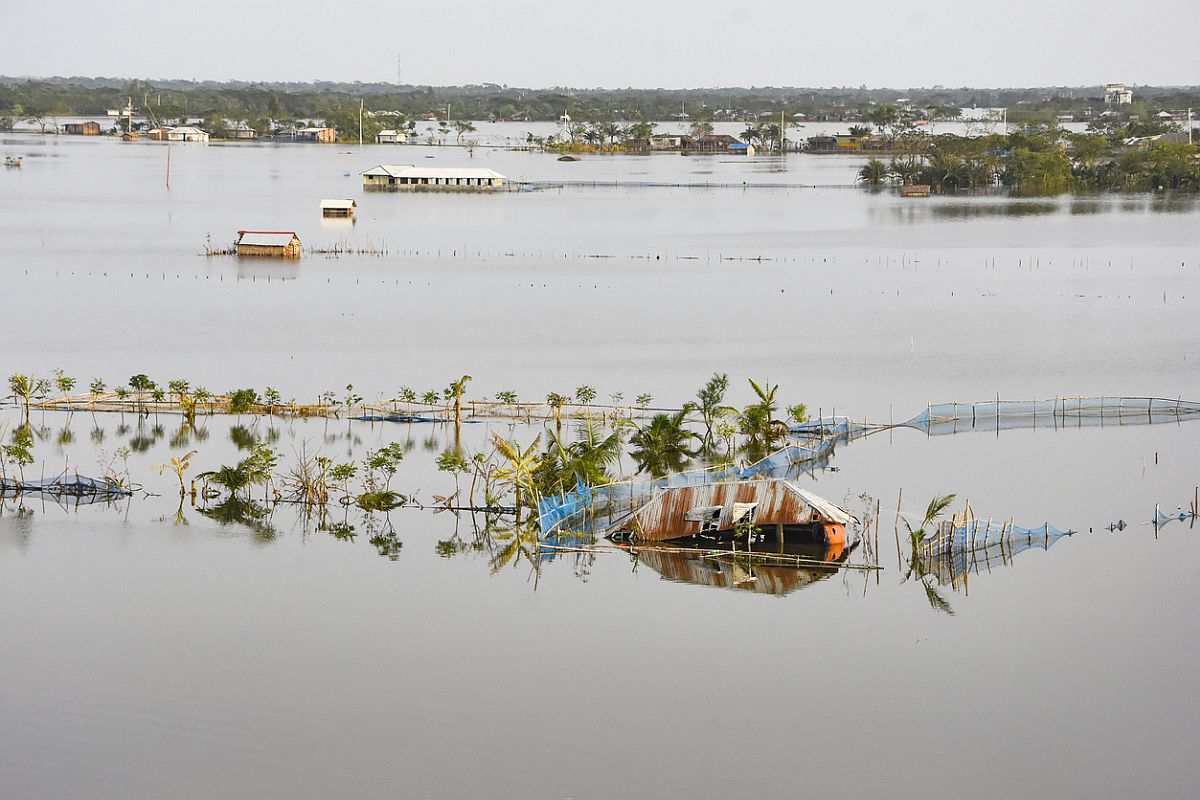Rare cat species spotted in trap cameras at Purulia forests
For the first time in West Bengal, forest department trap cameras have spotted a rare species of rusty spotted cat at Kotshila forests in Purulia district.
That the two disasters coincided was in itself one of the deepest tragedies that the state contenanced. Described as the “costliest tropical cyclone of the year”, the report has been crafted by Christian Aid, a relief and development agency based in London. It is said to have displaced 4.9 million people across the affected countries in the Bay of Bengal.

Cyclone Ampan. (Photo: iStock)
Seven months after Cyclone Amphan devastated a swathe of West Bengal on May 20 ~ at the peak of the coronavirus pandemic ~ Sunday’s report advanced in Britain is explicit on the point that it was the world’s “biggest calamity that has been caused by a natural disaster”, one that was overshadowed by Covid-19. Till this day, the state government has scarcely been able to assess the extent of the devastation, bogged down as it has been with treating the dreaded illness.
That the two disasters coincided was in itself one of the deepest tragedies that the state contenanced. Described as the “costliest tropical cyclone of the year”, the report has been crafted by Christian Aid, a relief and development agency based in London. It is said to have displaced 4.9 million people across the affected countries in the Bay of Bengal.
Advertisement
The bare facts of the event, that convulsed the state last summer, are mind-boggling. “It was one of the strongest storms on record in the Bay of Bengal, with sustained windspeed of 270 km per hour. It was also one of the costliest tropical cyclones of the year, with losses amounting to more $13 billion. At least 128 people were killed by the cyclone, which caused great damage in India, Bangladesh, Sri Lanka and Bhutan.” Tragically, Cyclone Amphan has been relegated to the footnotes in a fairly large stretch of South Asia.
Advertisement
Coronavirus intensified the fury of nature, and the subtext of the data states that Bengal had to bear the brunt of the economic blight inflicted by Amphan. Not that the Bengal government is yet to calibrate the cost of the damage. It was calculated to be Rs 1 lakh 3000 crore, which is “quite close to the cost mentioned in the international report”, going by the response of Bengal’s disaster management minister, Javed Khan. The reconstruction still appears to be a long way away and the customary cavil that the Centre is yet to advance Rs 1,000 crore will cut no ice, given that the equation between the Trinamul Congress and the BJP has soured considerably in recent weeks. In Bengal alone, 2.7 million houses were partially damaged.
Overall, the report portrays a dismal climate scenario on the fifth anniversary of the Paris conderence. On closer reflection, Amphan ranks fourth in the list of climate-related disasters of 2020. Notably, the hurricanes in America and the Caribbean, the crippling floods in China, and forest fires on the west coast of the United States, not to forget the devastation in Brazil that was allegedly facilitated for the emergence of industry. There is a quirky link between climate-change and economic development.
Most particularly, India suffered the highest damage wrought by climate-change ~ the pivotal issue at periodic conferences at the high table, whether in Cancun or Paris.
Advertisement